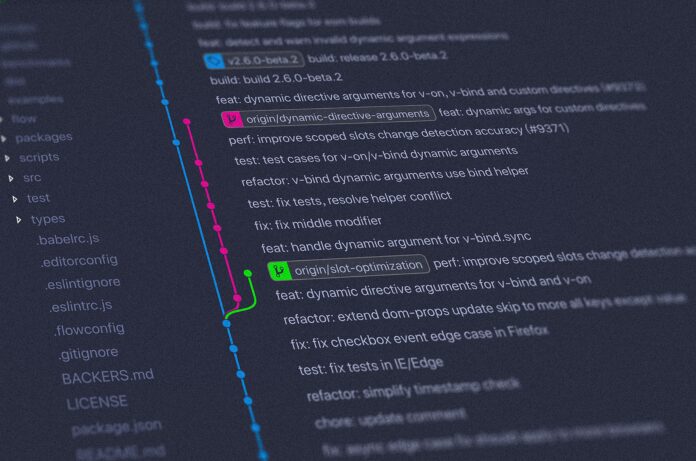Python is a popular programming language that is known for its simplicity, readability, and flexibility. It is a high-level language that is interpreted, meaning that it runs on an interpreter that executes code line by line. However, Python also has a compiler that can compile Python code into bytecode, which can then be executed by the interpreter. In this article, we will take an in-depth look at the Python compiler and explore how it works.
The Python compiler is responsible for taking Python source code and converting it into bytecode, which can be executed by the Python interpreter. The compiler performs a series of tasks to accomplish this, including lexical analysis, syntax analysis, and code generation. Let’s explore each of these tasks in more detail.
Lexical analysis, also known as tokenization, is the process of breaking down the source code into a sequence of tokens, or meaningful chunks of code. These tokens can include keywords, identifiers, operators, literals, and comments. The compiler uses a lexer, also known as a tokenizer, to perform this task. The lexer reads the source code character by character and groups them into tokens based on their meaning.
Syntax analysis, also known as parsing, is the process of analyzing the tokens produced by the lexer and determining if they form a valid syntax tree. The syntax tree is a hierarchical structure that represents the structure of the program, including statements, expressions, and control flow constructs. The compiler uses a parser to perform this task. The parser reads the tokens produced by the lexer and constructs a syntax tree based on the rules of the Python language.
Code generation is the process of generating bytecode from the syntax tree. The bytecode is a lower-level representation of the program that can be executed by the Python interpreter. The compiler uses a code generator to perform this task. The code generator traverses the syntax tree and generates bytecode for each node in the tree. The bytecode is then stored in a .pyc file, which can be executed by the interpreter.
One of the advantages of using a compiler for Python is that it can improve the performance of Python programs. When Python source code is executed by the interpreter, it must be parsed and compiled each time it is executed. This can be time-consuming, particularly for large programs. However, when Python code is compiled into bytecode, it can be executed more quickly, as the bytecode does not need to be parsed and compiled each time it is executed.
Another advantage of using a compiler for Python is that it can help catch errors early in the development process. When Python code is compiled, the compiler performs a series of checks to ensure that the code is valid and will execute correctly. These checks can catch syntax errors, name errors, and other common programming errors before the code is executed. This can save time and effort in the debugging process.
Python has several different compilers that can be used to compile Python code into bytecode. The most common compiler is the CPython compiler, which is written in C and is the default compiler for Python. CPython compiles Python code into bytecode that can be executed by the Python interpreter. Other compilers include Jython, which compiles Python code into Java bytecode, and IronPython, which compiles Python code into .NET bytecode.
In addition to the standard compilers, there are also several third-party compilers available for Python. These compilers can provide additional features, such as improved performance or enhanced debugging capabilities. Some popular third-party compilers include Cython, Nuitka, and PyPy.
Cython is a compiler that allows Python code to be written in a language that is similar to Python but is also compatible with the C language. Cython can compile Python code into C code, which can then be compiled into machine code for improved performance. Nuitka is a compiler that can generate highly optimized machine code from Python code. It also includes advanced optimization techniques, such as inlining and loop unrolling, to further improve performance. PyPy is another popular third-party compiler that uses a Just-In-Time (JIT) compiler to dynamically compile Python code into machine code at runtime. This can lead to significant performance improvements over the standard CPython compiler.
While using a compiler for Python can provide significant performance improvements, it is important to note that not all Python programs will benefit from compilation. Programs that spend most of their time executing I/O operations, such as reading and writing to files or network sockets, may not see significant performance improvements from compilation. However, programs that spend a lot of time executing CPU-bound operations, such as numerical computations or string manipulations, can benefit greatly from compilation.
In conclusion, the Python compiler is an important component of the Python programming language that can improve the performance of Python programs and help catch errors early in the development process. The compiler performs several tasks, including lexical analysis, syntax analysis, and code generation, to compile Python source code into bytecode that can be executed by the Python interpreter. While the CPython compiler is the default compiler for Python, there are also several third-party compilers available that can provide additional features and improved performance. When used appropriately, a compiler can greatly enhance the performance of Python programs and make development more efficient.
There are a few important things to consider when working with the Python compiler. First, it is important to understand how the compilation process works and what types of optimizations the compiler can perform. The compiler can optimize various aspects of Python code, including memory usage, function calls, and variable assignments. It can also use advanced techniques like loop unrolling and inlining to further improve performance.
It is also important to keep in mind that the Python compiler is just one tool that can be used to improve performance. Other techniques, such as using caching, optimizing algorithms, and using concurrency, can also be used to improve the performance of Python programs.
Another important consideration when working with the Python compiler is compatibility. While the CPython compiler is the default compiler for Python and is used by most Python developers, there are several other compilers available, such as PyPy and Nuitka. These compilers can provide additional features and improved performance, but it is important to ensure that your code is compatible with these compilers before using them in production.
One potential downside of using a compiler for Python is that it can make debugging more difficult. When Python code is compiled, it is transformed into bytecode that can be difficult to read and understand. This can make it more challenging to track down errors and bugs in your code. However, many compilers provide tools and features that can help with debugging, such as improved error messages and profiling tools.
In addition to improving performance, the Python compiler can also help catch errors early in the development process. By performing syntax and semantic analysis on your code, the compiler can identify potential issues before your code is executed. This can save you time and effort by catching errors early and preventing bugs from being introduced into your codebase.
In conclusion, the Python compiler is an important tool for improving the performance and reliability of Python programs. While it is not always necessary or appropriate to use a compiler for Python, it can provide significant benefits for programs that spend a lot of time executing CPU-bound operations. By understanding how the compiler works and how to use it effectively, you can improve the performance of your Python programs and make development more efficient.














